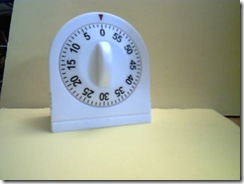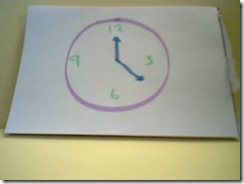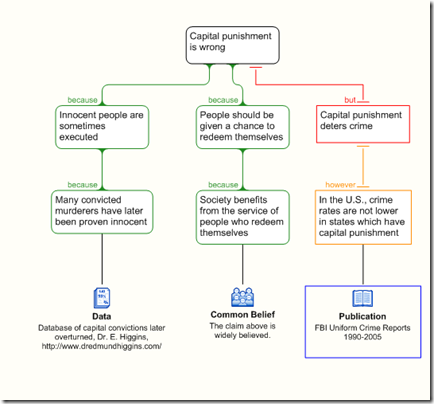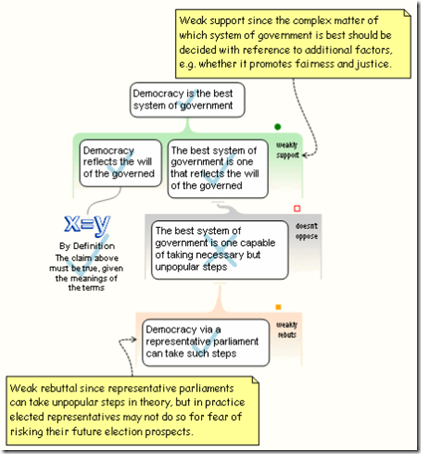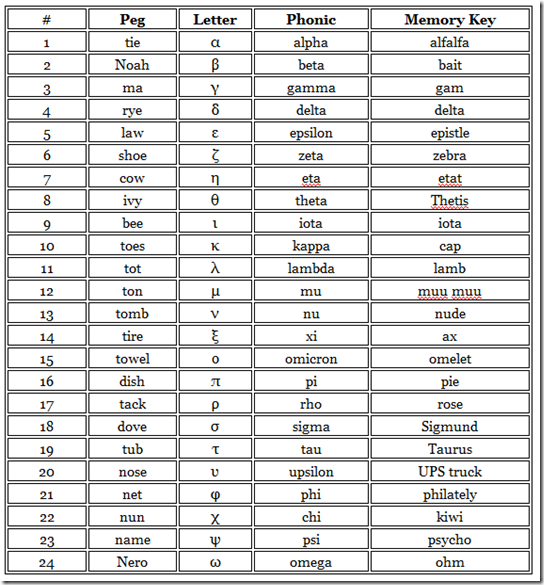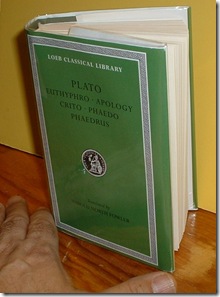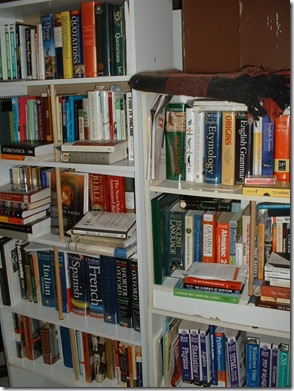The human mind requires stuff. Or at least the brain part of the mind needs goodies to function well, to learn effectively. Herewith follow my thoughts and experiences in getting the brain to function at a higher level than a CNN newscast with Wolf Blitzer. Much higher. These things help the brain to function optimally, especially if the brain is oldish and lacks the youthful quality of learn-at-any-cost that gets the young through college exams.
Blood and oxygen help, of course. A dead brain simply is a waste of the mind’s time. (The strange sound you no doubt hear is any number of philosophers turning over in their graves.)
 First and foremost, water. Lots of water. A brain without water is a brain with sagging neurons, slow transmission rates, and the occasional hallucination. Drinking a goodly amount of water before an exam will boost your score by an average of ten points. (No research has been done on this yet, but it figures that if you have to go to the bathroom a couple of times during an exam you can read the crib sheet you hid in your shorts.) Now for you purists, never mind how long that bottle will live in a landfill. Falmouth water reeks of chlorine, and I figure that using bottled water is my solid contribution to archaeologists a thousand years from now as they seek to understand our culture. (The way our culture is going there won’t be archaeologists in our future, unless they come from another solar system.)
First and foremost, water. Lots of water. A brain without water is a brain with sagging neurons, slow transmission rates, and the occasional hallucination. Drinking a goodly amount of water before an exam will boost your score by an average of ten points. (No research has been done on this yet, but it figures that if you have to go to the bathroom a couple of times during an exam you can read the crib sheet you hid in your shorts.) Now for you purists, never mind how long that bottle will live in a landfill. Falmouth water reeks of chlorine, and I figure that using bottled water is my solid contribution to archaeologists a thousand years from now as they seek to understand our culture. (The way our culture is going there won’t be archaeologists in our future, unless they come from another solar system.)
It is true that a well-watered brain and body work a lot better than the same dried out. There’s energy in them there bottles. Think of a glass of water as a little fusion reactor, powering your personal electrics, and hope to hell it doesn’t fuse because one of these little bottles would take out New York City.

To accompany the water, it doesn’t hurt to pop some pills. Not the kind you’re thinking of if you’re under fifty. No, I’m talking about vitamins, minerals, and this other stuff to be named later. There’s nothing like a dose of B vitamins to excite the neurons and sharpen the electrical flux between all those strange cells in your skull.
The other stuff is called DHEA. Men, pay attention. The official name, spoken reverently in the circles of the cognoscenti, is dehydroepiandrosterone. Us mortals just call it DHEA. It’s a testosterone precursor. Somewhat steroidal apparently, but not like the stuff that builds muscles on your forehead and under your arms. For the less libidinous older set, it boosts mood and energy and yes, libido if you have a use for that. It helps concentration and focus: feel better, focus better. It’s not magic, but it works for me. I wink at more young women when I’m popping one of these pills a day. I don’t get any young women, but my wink muscles work better.
In a similar vein, when it comes to food, eat light. Less food in the stomach, more energy available to the brain. Cut fat*. Cut starch. Drink coffee.
And exercise. Never mind that Stephen Hawking gets no exercise sitting in that chair all day and has one of the most brilliant minds of the age. He has an excuse. And he’s thin, didja notice? To get the mind working at higher levels, aim for thin in the body. Exercise every day and don’t worry about the weight. It’ll go or not. But exercise. The brain will like it because exercise gets fluid and oxygen up there. Even brains have to eat (apologies to zombies and humans who eat brains of various other beings… zombies I understand, but people eating the brains of sentient animals, no, I don’t get that).
Now, assuming you have a well-nourished brain that you’ve made happy with various endeavors and pills, let’s consider some of the functions that happy brain needs to do if you are going to learn anything. Take memory, for instance.
It’s a given that people believe, and science supports, that memory degrades as we age. But…big but… most people do not train their memory, nor do they know how to work the levers of memory. And yet everyone can have a powerful memory.
Years ago, when I first came on some of the ‘secrets’ of training memory, I tested myself with a particularly difficult task, using what I had just learned. The task was to memorize a complete, fully-shuffled deck of playing cards, and do it quickly. At the time, I read about a professor teaching a college class to memorize a deck. It took them six months to learn one deck. Using the technique I had just studied, in which I needed a couple of hours to learn the method, and a little more time to practice, it ultimately took me about a minute to actually memorize the deck. Literally a minute. Fifty-two cards. I could reel off the whole deck, or tell you where any given card was.
Now if I had been a card player, that would have been a wonderful way to tilt percentages in my favor. Imagine playing gin and instantly recalling who played what when. Bridge? Same thing. Give a little twist to the trick and you know everything that happened during play.
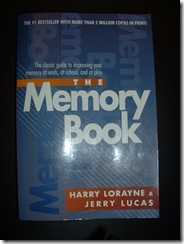 The techniques were popularized by Harry Lorayne, memory expert and showman. And there’s nothing fancy about them. The basics were known and used by ancient orators and scholars. Lorayne dusted them off, expanded them, applied them to virtually anything and everything. If you think you can’t remember stuff, you have got to read The Memory Book by Harry Lorayne and Jerry Lucas. Trust me.
The techniques were popularized by Harry Lorayne, memory expert and showman. And there’s nothing fancy about them. The basics were known and used by ancient orators and scholars. Lorayne dusted them off, expanded them, applied them to virtually anything and everything. If you think you can’t remember stuff, you have got to read The Memory Book by Harry Lorayne and Jerry Lucas. Trust me.
 And if you want get some of the history of memory work, pick up an academic paperback titled The Art of Memory by Frances A. Yates. There’s an amazing chart in it, called ‘The Memory Theatre of Giulio Camillo’. It’s a sample of a memory palace, not unlike the memory palace of Hannibal Lecter, the villain psychopathic cannibal from The Silence of the Lambs. It’s a place you can go to store memories, using association. Ancient orators would use the rooms of their homes, associating each idea of their speech to a different room or spot in the house, in a fixed order. While giving the speech, they simply walked, mentally, through the house and picked up the idea they needed for each part of the speech.
And if you want get some of the history of memory work, pick up an academic paperback titled The Art of Memory by Frances A. Yates. There’s an amazing chart in it, called ‘The Memory Theatre of Giulio Camillo’. It’s a sample of a memory palace, not unlike the memory palace of Hannibal Lecter, the villain psychopathic cannibal from The Silence of the Lambs. It’s a place you can go to store memories, using association. Ancient orators would use the rooms of their homes, associating each idea of their speech to a different room or spot in the house, in a fixed order. While giving the speech, they simply walked, mentally, through the house and picked up the idea they needed for each part of the speech.
Lorayne simplifies the old methods, but they are fascinating.
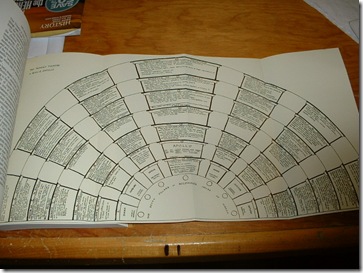
The Memory Theatre of Giulio Camillo

The Memory Theatre of Giulio Camillo (detail)
Another tool that I have found useful, and fun, is the mind map, first popularized by an English fellow, Tony Buzan, and since expanded on by others and turned into several software programs. Instead of taking notes while reading or while listening to a lecture or just brainstorming or noodling, you make a mind map. Here’s an example:
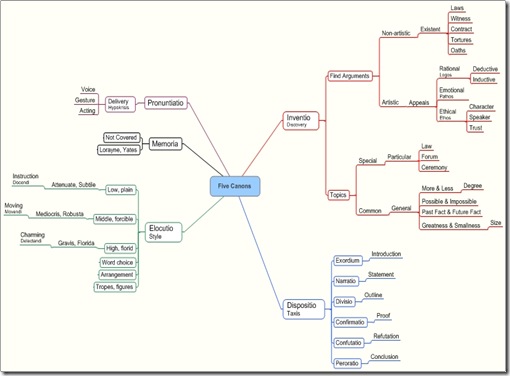
This map details information about the five canons of classical rhetoric, using a program called MindManager Pro. Images and symbols can be added. The idea is to pick the core information and put it down in a way that will be meaningful to you. And because you are looking for key ideas in text or speech, you will focus and concentrate much more intensely than if you were simply writing down as much information as you could. In a way, you’re picking memory keys, and you’re incorporating to some extent Lorayne’s idea of original awareness, which is simply the idea that forcing yourself to make an association forces you to be one hundred percent aware of the information for the briefest time, enough to fix it in memory.
There are a number of programs out there, including some good free ones, and there are also a number of books on the subject, including the original by Buzan.
Some wonderful mind maps can be done by hand, and in fact doing them manually is the preferred method, and at least somewhat more effective than using software. Here’s a marvelous full-sized example at this link: Illumine.
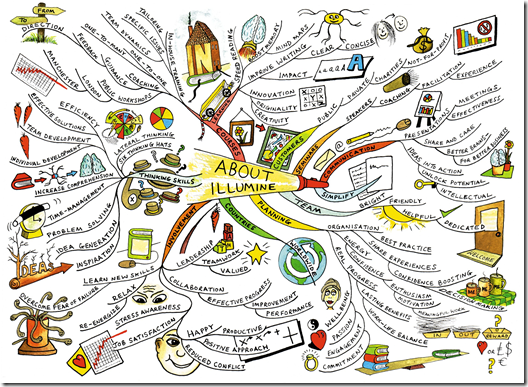
A mind map is an intensely personal document and experience. The Illumine map above may not mean much to you, but to the creator it captures the entire experience. He knows what every line and picture means. Your map of the experience would be different, but just as meaningful to you as this one is to him.
Another tool that’s new to me, but that I have used in an undisciplined way in the past, is the Pomodoro. It’s called the Pomodoro Technique, named after Italian for tomato, and more specifically named for a kitchen cooking timer that is shaped and colored like a tomato.
The basic idea is that you set the timer for 25 minutes, after deciding what you want to do, and until the timer goes off the only thing you do is that task. If you finish before the bell rings, you review, overlearn, whatever you can do to keep focused on that particular task. If you need more time, you break for a few minutes, then set another 25 minutes, and spend the entire time on the task. There is no such thing as a partial Pomodoro. It’s the full 25 minutes. The full technique is a bit more complex, but the basic thing is powerful.
I’ve found that if I limit the time I spend on studying something, and include breaks, and even some meditation between time periods, the whole process works better. Somehow the mind is happier, and happy minds are learning minds. (Yeah, I know, that sounds so dumbass.)
Another tool that I like a lot is called Brainstorm, the product of a couple of English types. It’s a lightning fast outliner and brainstormer, deceptively simple and remarkably flexible and useful.
Just one more, I promise. Some Australians created a program called Rationale for studying arguments – logical and rhetorical arguments, not the kind you have with your significant other or the annoying neighbor. It’s great, and it and the site link to a lot of good material on rational argumentation.
I should note that I have no financial interest in and stand to make no financial gain from the items I’ve mentioned. They’re things I use and find useful for study and for writing. And for winking at women.
—————————-
* I may have been misinformed on fat. According to an incredibly reliable and cute source, the way to brainpower (and thinness) is to boost protein, with fat, eat veggies and non-sweet fruits, and cut grains and starches. That is, of course, the simplified version.
#
Technorati Tags:
Brainstorm,
MindManager,
Mind Map,
Pomodoro,
Rationale,
Learning,
Education,
Memory,
Harry Lorayne,
Giulio Camillo,
Frances A. Yates

